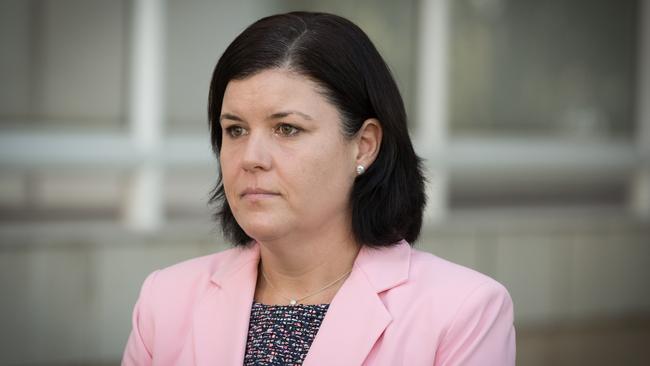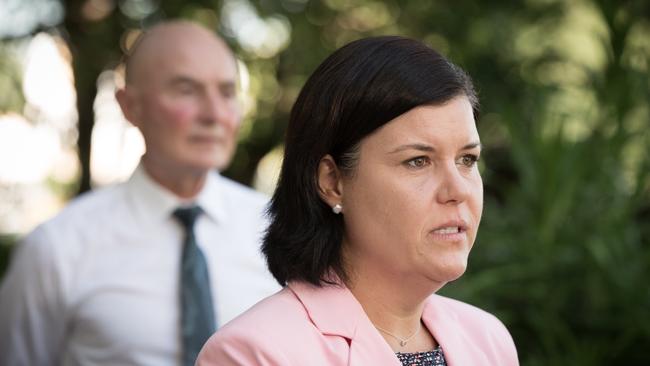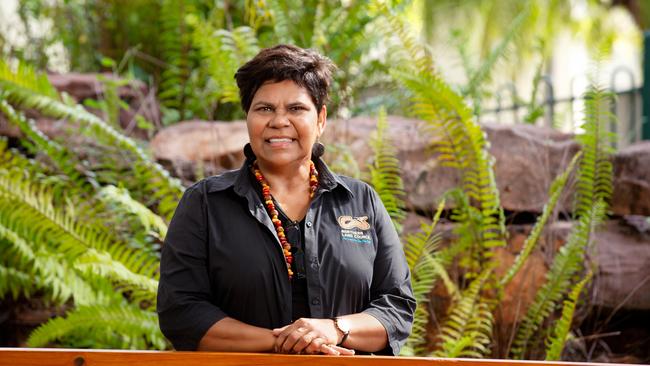NT’s COVID-19 battle revealed: Modelling predicted more than 2000 deaths, 60 per cent of the population to be infected and potential ‘catastrophic impact’ on vulnerable communities
BODY bags were sent to the NT’s remote indigenous communities in preparation for coronavirus outbreaks, the Government has revealed, as early modelling found more than 2000 people would die in the Territory if the virus had spread unchecked.

News
Don't miss out on the headlines from News. Followed categories will be added to My News.
BODY bags were sent to the NT’s remote indigenous communities in preparation for coronavirus outbreaks, the Government has revealed, as early modelling found more than 2000 people would die in the Territory if the virus had spread unchecked.
Speaking exclusively to the NT News, Health Minister Natasha Fyles said worst-case scenarios floated at the beginning of the pandemic response showed a potential “catastrophic impact” on vulnerable indigenous communities.
“Some of the scenarios were pretty horrible … do we leave people in community to pass away?” she said.
“We sent to our regional areas the supplies they needed and that included body bags.
“That was one of those moments that really drove it home for me, was people asking ‘why are you sending body bags?’.”
MORE CORONAVIRUS NEWS
Mindil Beach Sunset Markets may not go ahead in 2020
COVID-19 pop-up testing clinics open in Darwin CBD, Palmerston
NT Government debt to be ‘accelerated’ by coronavirus, warn economists

Early clinical projections prepared for the NT Government found 80 per cent of COVID-19 infections would be mild and manageable at home while 15 per cent would require hospitalisation and 5 per cent would need intensive care.
Ms Fyles said 2000 Territorians would have died and the NT would have needed an additional 900 hospital beds and 320 ICU beds based on modelling of 60 per cent of the jurisdiction’s estimated 240,000 residents falling ill over four months.
Slowed to 20 per cent of the population getting sick over eight months, the NT would have needed an extra 400 beds and 160 ICU beds – still far higher than what the health system could cater for.
Royal Darwin Hospital has less than 20 intensive care beds, with the ability now to expand to 50.
There have been 30 confirmed cases in the NT to date and no community transmission of COVID-19.
Indigenous Australians, who make up one in every four Territorians as per the last Census, have the worst health outcomes in the country.
Northern Land Council chief executive Marion Scrymgour said beyond co-morbidities, overcrowded housing, with 10 to 30 people using a home, and poor health literacy made coronavirus a “very serious threat” to Aboriginal people in particular.
Ms Scrymgour, who heads the peak body representing two-thirds of the NT’s indigenous population, said “anxiety levels” had been through the roof during the pandemic, and it took “forceful arm-twisting” of bureaucrats to put in measures that would keep mob safe.

Chief Minister Michael Gunner said the NT’s response, alongside Australia’s, had to be rapid because of the jurisdiction’s heightened vulnerability.
“If it got loose here, it would be deadly,” he said.
“There’s no equation for an NT chief minister to say how many lives are you prepared to lose? None.
“How do you make sure it doesn’t arrive, and the clinical bias was strong (so we) started pulling the policy levers that made sure Territorians are safe.”

The NT was among the first jurisdictions to shut down its internal and external borders, declaring an emergency under the Biosecurity Act in mid-March to prevent unnecessary travel in and out of nine regional zones.
By March 24 anyone entering the NT was forced into 14 days mandatory quarantine, with Territory police, defence personnel, and Australian Federal Police and Border Force sent to bolster all road, land, air, and rail points.
Ms Fyles said the ramped up response meant cops were sent to the NT/WA border within hours of the NT Government being alerted to a cluster forming in WA’s remote Kimberley Region.
FULL access to our journalism – just $1 for the first 28 days
Two months on, the NT’s health system, spread across six hospitals in major centres and 80 remote clinics, has been able to prepare for different infection scenarios.
Even as restrictions are progressively lifted in the Territory, with internal community border measures to be reviewed on June 18, Ms Fyles warned the NT could not let its guard down.


